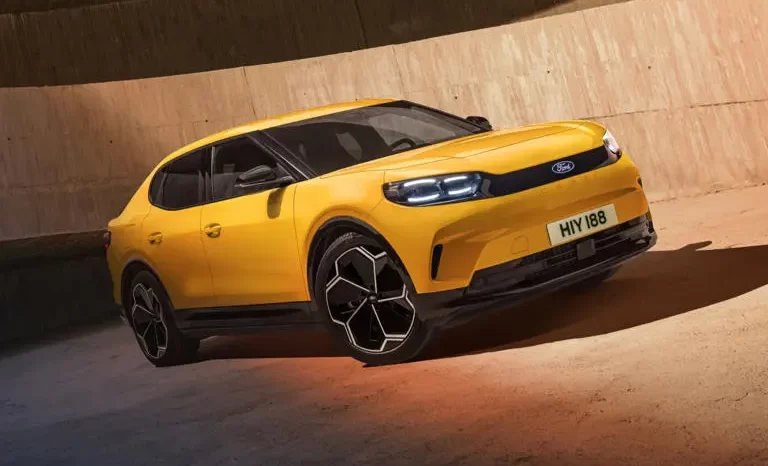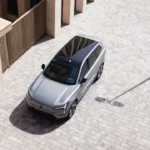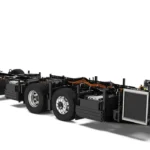Key Highlights:
- Ford Capri underpins VW MEB Platform
- Shares a lot of similarities with the E-Explorer SUV
- Gets two battery-pack options
- Unlikely to launch in India
Reviving well-known car names is now a key part of Ford’s strategy to capitalize on its rich history as a way to stand out in the electric vehicle era. This comes at a time when achieving technical superiority is more challenging and the market is being disrupted by numerous new electric vehicle start-ups from China and other regions. Going with the trend, the iconic Capri’s journey transits from a crossover to an e-coupe with its re-birth as a European-Spec.
Design of Ford Capri:
At 4,634mm in length, 2,063mm in width, and 1,626mm in height, and weighing between 2,023kg and 2,115kg depending on the model, the new Capri e-SUV is very similar to the Volkswagen ID.5, with which it shares its underpinning. The Explorer e-SUV introduced last year features a boxy, straight-edged design inspired by Ford’s American roots. In contrast, the Capri has a more streamlined, aerodynamic shape, resembling a high-riding sedan rather than a traditional SUV. Its look is quite familiar to that of the Polestar 2.
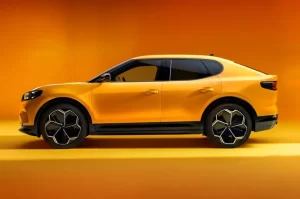
Aesthetically, the Capri stands out from the Explorer not just with its sloping roofline but also with a unique front end featuring distinctive LED headlights reminiscent of the Mk3 Capri and a wraparound contrasting silhouette. The rear follows a similar design, adding a touch of retro charm.
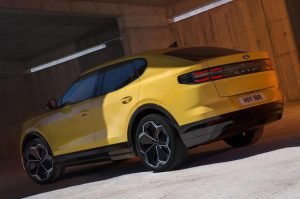
Cabin of Ford Capri:
Inside, the cockpit borrows some elements from the Explorer, featuring a 14.6-inch vertically stacked infotainment screen that slides back to reveal a hidden storage compartment, a 17-litre mega-console between the front seats and a foldable boot floor that provides up to 527 litres of cargo space. Elevating the convenience factor in the cabin, availability of wireless charger, a fully-digital driver’s display, dual-zone climate control, rear seat air-con vents, electronic adjustability for front seats and a panoramic sunroof plays a major role.
The one-piece sports squared-off three-spoke multi functional steering, which highlight its performance focus. “The cabin is exactly how an original Capri driver would have imagined it in the future,” said Amko Leenarts, Ford Europe’s design chief, who has spearheaded the Capri’s redesign. For safety net, the Capri packs a 360-degree bird view camera and advanced-driver-assistance system (ADAS) level 2 suite.
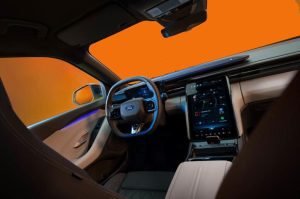
Powertrain of Ford Capri:
Following the Explorer, the Capri is engineered on Volkswagen Group’s MEB platform and offers two powertrain options: a 213 kW rear motor, accelerating 0-100 Kmph in just 6.4 seconds and a 253 kW twin-motor setup for a quicker 0-100kph in only about 5.3 seconds. The base model (Select) uses a 77 kWh battery providing up to 627 km of range, charging at speeds up to 135 kW.
Whereas, the top-end spec (Premium) equips a larger 79 kWh battery offering up to 592 km of range and faster charging up to 185 kW. Compared to the Explorer, that is capable of achieving around 530 km respectively. The Capri benefits from its sleeker design boasting an aerodynamic structure.
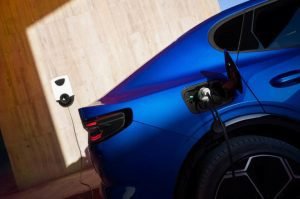
The Verdict:
Ford exited the Indian market temporarily as both a dealer and manufacturer. However, they plan a comeback with the New Gen Everest full-sized SUV and later the Mustang Mach-E, as outlined by Anurag Mehrotra, President of Ford India operations. The Capri e-SUV could play a crucial role in Ford India’s lineup, filling the gap for a compact SUV and aligning with the emerging trend of coupe SUVs, exemplified by the Tata Curvv set to launch on August 7, 2024. With electric powertrains gaining traction, the Capri’s introduction in India could redefine the segment and restore Ford’s position in the market.

